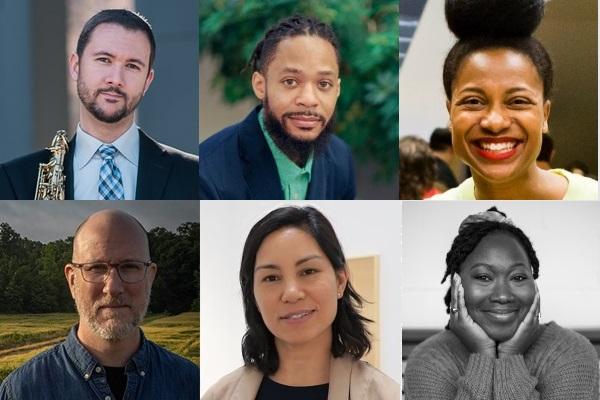Faculty mentors are the North Star of 'Creatives @ the Barnett'

The first year of Creatives @ the Barnett is underway. At the heart of the program are the lessons that its six faculty and staff members have already begun to impart on the 12 student creatives who are using their art to explore the complex theme of homelessness through their joint projects.
Scott A. Jones, a professor and associate director of bands in the school of music, has served as director of the Barnett Center for Integrated Arts and Enterprise for the past three years. Jones spearheaded the launch of the Creatives @ the Barnett program, which connects six pairs of students from different artistic backgrounds under the guidance of six mentors.
Once the goals of the program were laid out, the next task was deciding who should take part in the cohort - and that started with recruiting mentors. Jones says that the first person he approached, a fellow faculty member in the school of music, is a great example of what being an interdisciplinary artist is all about. “Michael René Torres is just an extraordinarily collaborative, interdisciplinary being. He is not only an incredible artist, as a saxophonist, but he's also a composer.”
Jones recounts seeing Torres perform with other Columbus artists as a source of inspiration for what Creatives @ the Barnett would become. “I remember, one of the early performances that I went to see in town with him, was with poets, and Michael is bringing the music side and they're bringing the poetry side and out of this thing comes this brand-new expression of what it is to be alive.”
From there, says Jones, mentors-to-be were mostly brought on board through recommendations from those who had already joined the program. “All six of these people are also deeply student-centered educators - and that's essential in this,” says Jones. “They're just extraordinary, driven people who love the interaction and the messiness of [the artistic process.] That's the perfect kind of attitude that we need to be serving as North Star for these creatives, as they move through this journey.”
